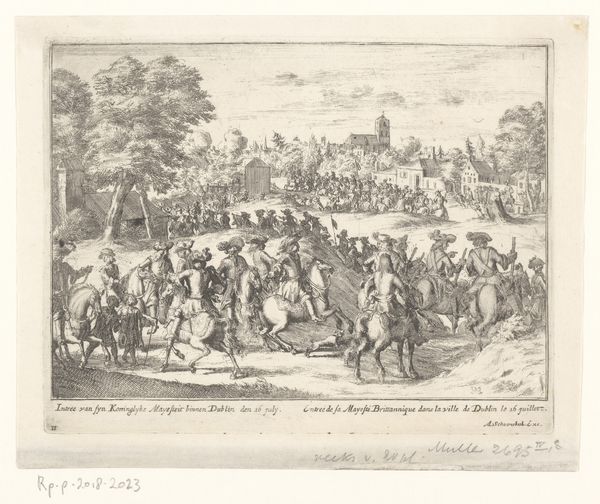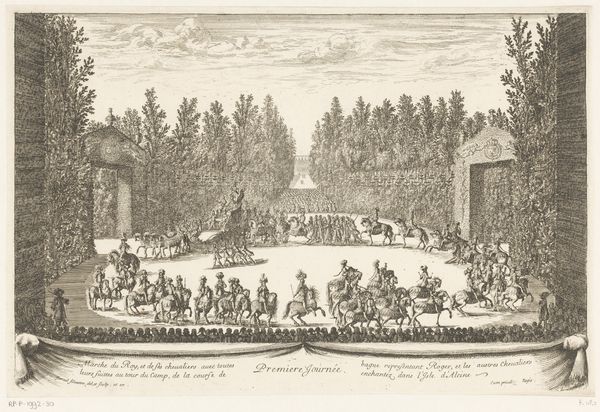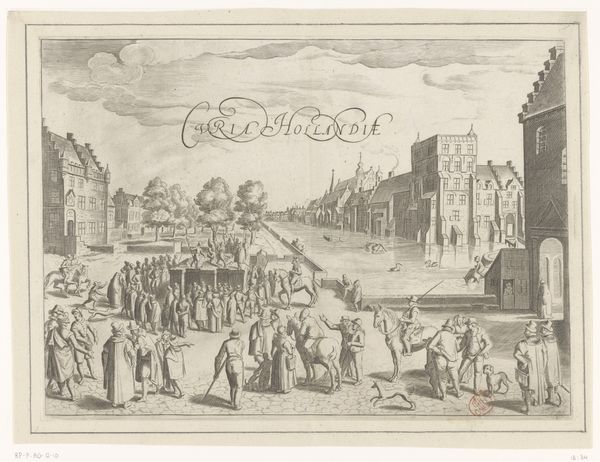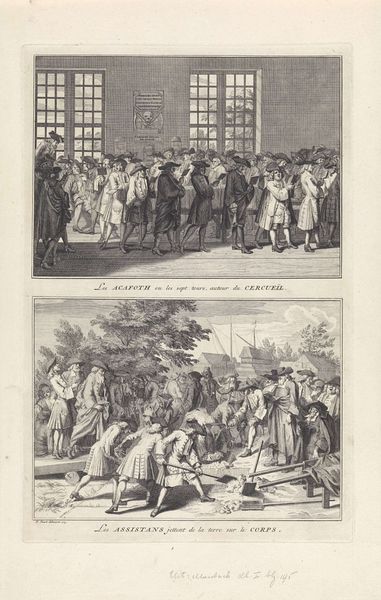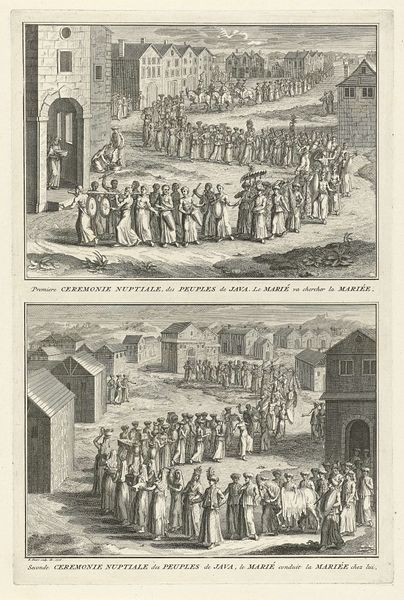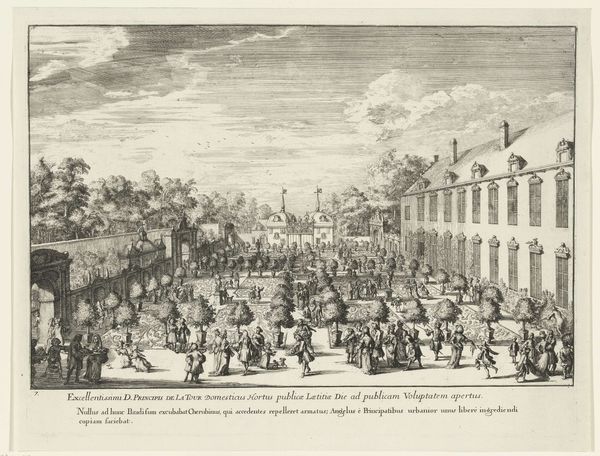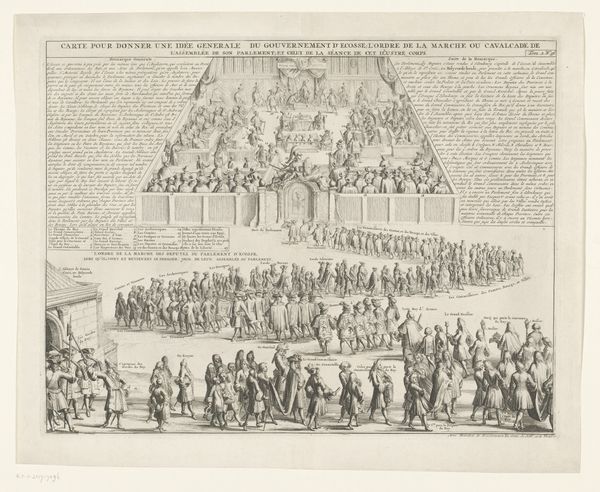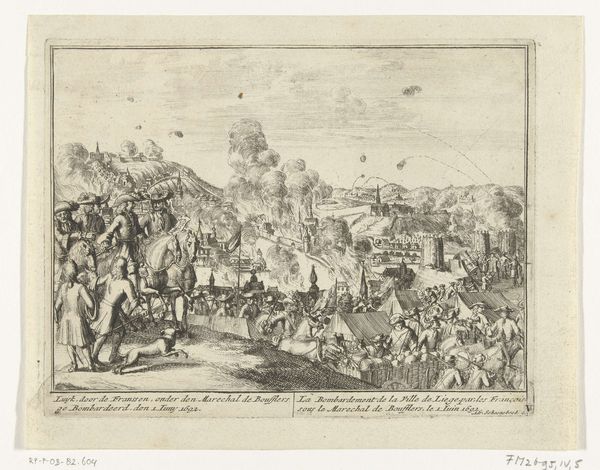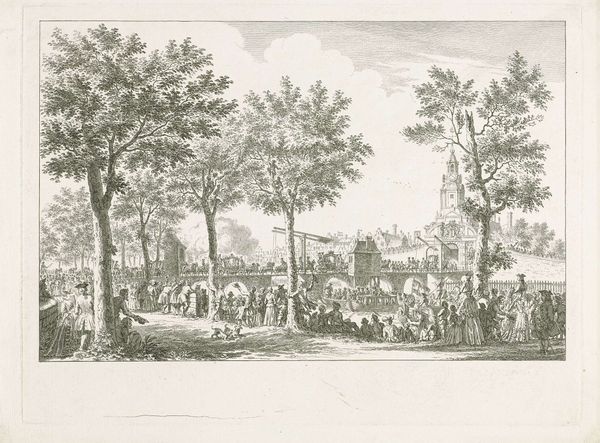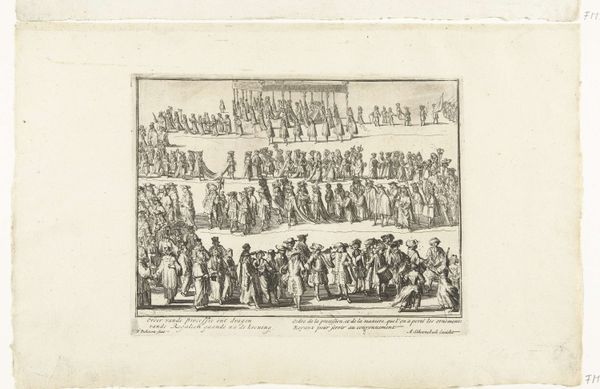
print, engraving
#
narrative illustration
#
narrative-art
# print
#
line
#
history-painting
#
engraving
Dimensions: height 342 mm, width 427 mm
Copyright: Rijks Museum: Open Domain
Curator: This is "Huwelijksplechtigheid en begrafenis in Japan", or "Marriage Ceremony and Funeral in Japan," an engraving made in 1727 by Bernard Picart. It’s quite a detailed piece. The composition, split horizontally, depicts what the artist imagines a wedding and funeral in Japan would be like. It's fascinating to see this historical interpretation, though it’s probably inaccurate. What strikes you first about this work? Editor: It’s the stark contrast between the top and bottom halves, isn’t it? The ‘marriage’ scene feels strangely chaotic with all the activity and burning pyre and then underneath there's a darker procession for a funeral. What visual techniques does Picart use to distinguish these events and guide our eye? Curator: Observe how Picart employs linear perspective to create depth in both scenes. The repetition of figures, arranged in a structured receding pattern, provides a sense of order within the perceived chaos. Note the distinct framing, creating almost a sense of "tableaux" and further segmenting it. What compositional rhythms can you identify? Editor: The figures seem stiff, almost posed, despite the busy scenes they inhabit. It’s like he is using repetition to describe cultural ritual, but it doesn’t come across as authentic. It also flattens space in an interesting way... Curator: Indeed, Picart likely relied on secondhand accounts and his own imagination. His intent might be to emphasize perceived differences between cultures, and observe. Is there anything particularly interesting you are observing? Editor: It’s the lines. The precision of the engraved lines define every detail, from clothing to architectural elements. Curator: Exactly, this creates a striking clarity that draws the eye into the scene, though possibly obscuring genuine emotional nuance. By emphasizing detail and clear spatial organisation he elevates cultural documentation into high art in his eyes. It’s a window into his formal aesthetic choices, irrespective of what is necessarily truthful about Japan. Editor: So, focusing on the form illuminates Picart’s vision and style, regardless of the actual content? It gives us insight into European perspective on "exotic" practices. Curator: Precisely! It teaches us as much about the artist's world view as it does about Japanese culture of the time. I appreciate how a close reading lets us to find multiple ideas that can be had through this one piece of art. Editor: This engraving certainly offers layers beyond a simple depiction of ceremonies. It encourages a much wider perspective on the artwork's value!
Comments
No comments
Be the first to comment and join the conversation on the ultimate creative platform.
